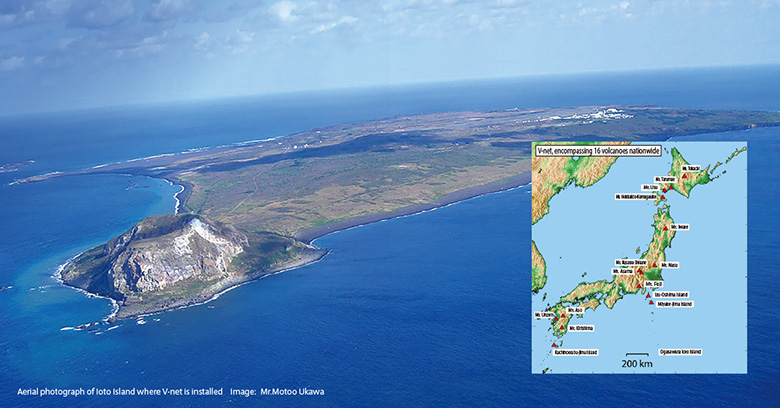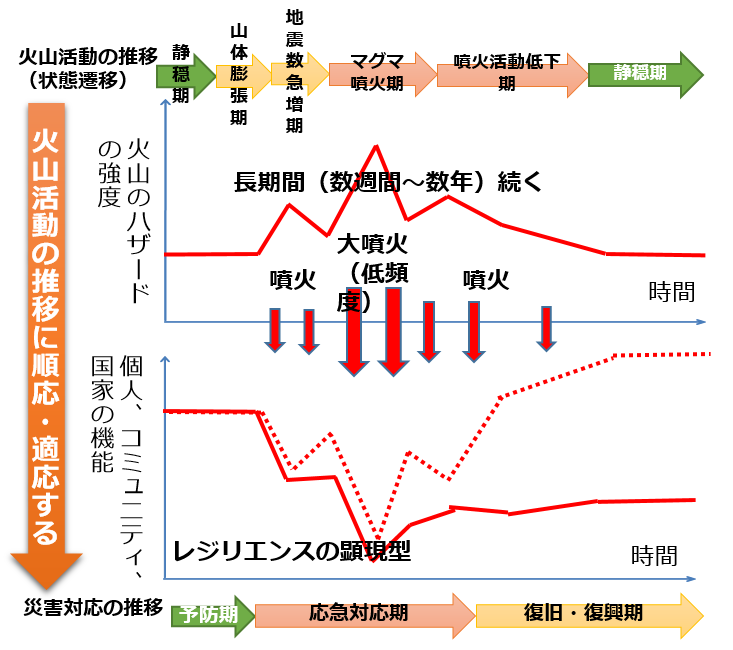Research and Development on Improving the Ability to Predict, Prevent, and Respond to Volcanic Hazards
Reducing Volcanic Hazards with the Power of Science and Technology

Volcanoes bring us benefits through tourism and hot springs, but they also sometimes bring disasters that can cause long-term inconvenience to people living at the foot of the volcanoes. A resilient society against volcanic disasters is one that can use volcanoes safely by knowing the risks associated with volcanic disasters and taking appropriate measures in response to changes in volcanic activity and threats. We will promote research on improving the ability to predict, prevent, and respond to volcanic disasters in order to achieve a resilient society.
Development of technology for predicting volcanic activity
Volcanic activity causes various phenomena, such as earthquakes, crustal deformation, volcanic gas emissions, and eruptions. We will develop forecasting technology for volcanic activities by utilizing data from the V-net (the Fundamental Volcano Observation Network), remote sensing technology, and material science surveys. In addition to research on individual volcanic phenomena, we will improve our forecasting capabilities by, for example, conducting research on the prediction of volcanic activity transitions based on the “state of volcanic activity,” a comprehensive view of volcanic activity using various types of data.
Promoting data integration and knowledge synthesis
Various data and simulation results of pyroclastic flows and lava flows are integrated into the JVDN (Japan Volcanological Data Network) system. Furthermore, we will promote the integration of knowledge in the field of volcanoes through the JVDN system and the state of volcanic activity. By changing the state of society (e.g., the state of exposure) in response to changes in the state of volcanic activity, the threat and risk of eruptions can be reduced or mitigated (Figure). We will promote research to improve preventative capacity by clarifying the relationship between the state of volcanic activity and the state of society by also utilizing social data such as exposure and vulnerability information.

Figure: Relationship between volcanic activity and society’s resilience
Disaster Response
It is difficult to accurately predict ashfall and lava flows in advance because they vary greatly depending on wind direction and topography. Therefore, it is necessary to collect information quickly after an eruption occurs and provide it to administrative agencies. Under the policy of the Cabinet Office, a system has been established to collect and promptly share ashfall survey data using the JVDN system. Utilizing this mechanism and others, we will promote research to provide information products that can be used for decision-making during disasters in order to improve response capabilities.
Strengthening Collaboration
In order to realize a resilient society against volcanic disasters, it is necessary to integrate various research fields that focus on volcanoes and strengthen cooperation among organizations involved in research and disaster prevention. As a core research institute for disaster prevention science and technology, the National Research Institute for Earth Science and Disaster Resilience (NIED) will contribute to strengthening collaboration through the JVDN system and other means.



